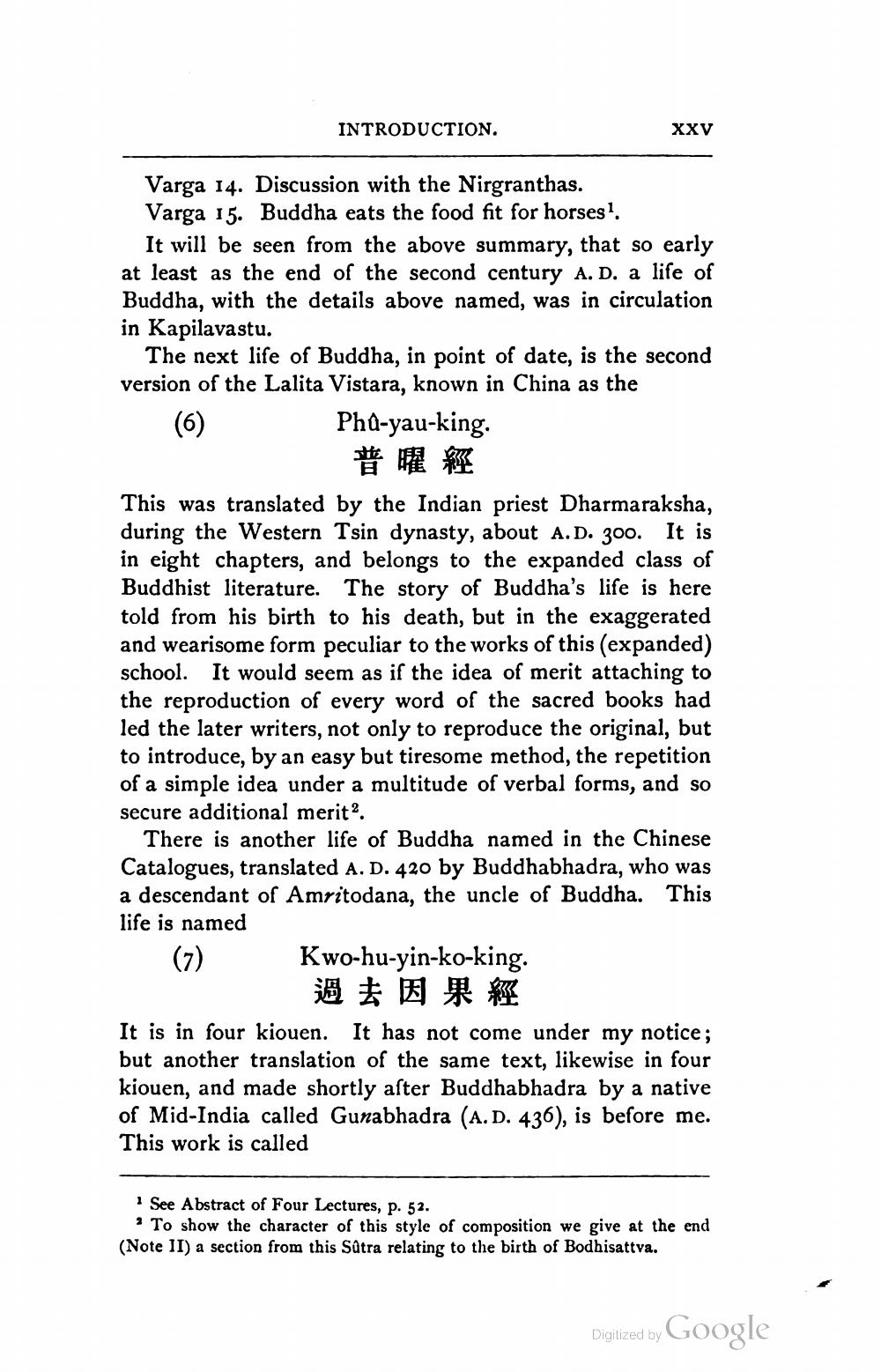________________
INTRODUCTION.
XXV
Varga 14. Discussion with the Nirgranthas. Varga 15. Buddha eats the food fit for horses.
It will be seen from the above summary, that so early at least as the end of the second century A. D. a life of Buddha, with the details above named, was in circulation in Kapilavastu.
The next life of Buddha, in point of date, is the second version of the Lalita Vistara, known in China as the
Phd-yau-king.
普曜經 This was translated by the Indian priest Dharmaraksha, during the Western Tsin dynasty, about A.D. 300. It is in eight chapters, and belongs to the expanded class of Buddhist literature. The story of Buddha's life is here told from his birth to his death, but in the exaggerated and wearisome form peculiar to the works of this (expanded) school. It would seem as if the idea of merit attaching to the reproduction of every word of the sacred books had led the later writers, not only to reproduce the original, but to introduce, by an easy but tiresome method, the repetition of a simple idea under a multitude of verbal forms, and so secure additional merita.
There is another life of Buddha named in the Chinese Catalogues, translated A. D. 420 by Buddhabhadra, who was a descendant of Amritodana, the uncle of Buddha. This life is named (7) Kwo-hu-yin-ko-king.
過去因果經 It is in four kiouen. It has not come under my notice; but another translation of the same text, likewise in four kiouen, and made shortly after Buddhabhadra by a native of Mid-India called Gunabhadra (A. D. 436), is before me. This work is called
See Abstract of Four Lectures, p. 52. ? To show the character of this style of composition we give at the end (Note II) a section from this Sūtra relating to the birth of Bodhisattva.
Digitized by Google




